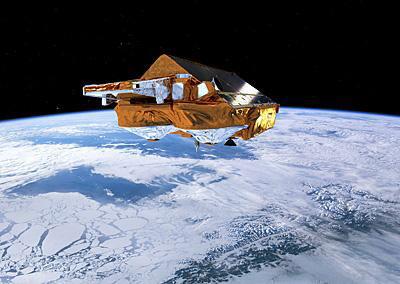| Videos | ? Latest |
|
? Feature | ? Sports | ? Your Videos |
European Space Agency to launch 'ice mission'
Polar ice caps are said to be melting at an alarming rate, but no one really knows exactly how fast.
Until now, no accurate and reliable data has been available on monthly variations in land and sea-ice masses. This could be about to change.
The European Space Agency is preparing to launch its so-called "ice mission".
A leading scientist says the satellite will mainly focus on the Antarctic and Arctic.
Duncan Wingham, Lead Scientist of University College London, said, "Fundamentally what we hope to get with CryoSat is a picture of how the large ice sheets on earth are changing, both the Antarctic ice sheet contributing to sea level change and also the Arctic ice, the ice that covers the Arctic ocean how it's changing, which could contribute to climate change, particularly in Europe."
The agency's CryoSat-2 weighs 700 kilograms and distinguishes itself with its special sensor.
From an altitude of just over 700 kilometers on a highly inclined orbit, CryoSat-2 will measure with centimeter precision, changes in the thickness of the ice.
At the moment, scientists cannot fully explain why the sea level is rising somewhere and subsiding elsewhere. They will try to piece all data together to get a full understanding of changing sea levels.
 0
0 







